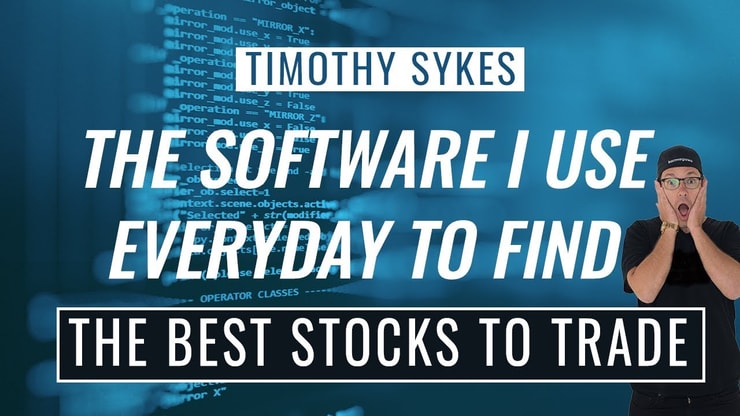Finviz Canada is a stock screening platform tailored for Canadian traders. It offers a range of tools for analyzing stocks listed on Canadian exchanges, providing real-time data, charts, and advanced screening features. This platform is a go-to resource for traders looking to make informed decisions in the Canadian market.
You should read this article because it provides an in-depth guide to Finviz Canada, a stock screening platform tailored for Canadian traders, offering you real-time data and advanced screening features to make informed trading decisions.
I’ll answer the following questions:
- What is Finviz Canada and how is it different from other versions of Finviz?
- How can stock screeners like Finviz assist in researching stocks?
- What are the key features of Finviz that make it invaluable for traders?
- How does Finviz compare to other stock screeners available to Canadian traders, like TMX Stock Screener and Stock Rover?
- What are the pricing and plans offered by Finviz, and is the Elite plan worth it?
- How can you utilize Finviz effectively to find oversold stocks and stay updated with news?
- What unique features does Finviz offer to Canadian investors?
- Is Finviz a reliable source for trading information?
Let’s get to the content!
Table of Contents
- 1 What Is Finviz Canada?
- 2 Understanding Stock Screeners
- 3 Overview of Finviz as a Stock Screener
- 4 Comparing Finviz to Other Stock Screeners in Canada
- 5 How To Utilize Finviz Effectively
- 6 How To Find Oversold Stocks with Finviz Free Stock Screener
- 7 Finviz Pricing and Plans
- 8 Key Takeaways
- 9 FAQs of Finviz Canada
- 9.1 How Does Finviz Compare to Other Canadian Stock Screeners?
- 9.2 What Unique Features Does Finviz Offer to Canadian Investors?
- 9.3 Is Finviz a Reliable Source?
- 9.4 What Are Breakouts and Target Prices in Stock Analysis?
- 9.5 How Do Margin and Gross Margin Impact Investment Decisions?
- 9.6 Can Finviz Canada Help Track Market News from Reuters and PR Newswire?
- 9.7 What Is the Relevance of Product Updates and Sales Announcements?
- 9.8 How Do Company Structure and Operation Times Influence Trading?
- 9.9 What User Settings and Resources Does Finviz Canada Offer?
- 9.10 How Can Traders Navigate Global Markets and Events with Finviz Canada?
- 9.11 How Can Traders Utilize the Double Bottom Pattern in Wall Street Trading?
- 9.12 How Do Privacy Settings Affect the Use of Financial Products Advertised on Wall St.?
What Is Finviz Canada?
Finviz Canada is a specialized version of the Finviz stock screener, designed to focus on Canadian stocks. It’s a tool that traders and investors use to filter stocks based on various criteria like volume, price, market cap, and more. In my years of trading and teaching, I’ve found Finviz to be an invaluable resource for both novice and seasoned traders. It’s especially useful for those who want to focus on the Canadian market, covering stocks listed on the TSE and other Canadian exchanges.
Understanding Stock Screeners
Stock screeners are tools that traders use to filter out stocks based on specific criteria. They’re essential for anyone who wants to trade effectively, especially in markets with high volatility. I’ve been using stock screeners for years, and they’ve been a cornerstone in my trading strategy.
When it comes to trading platforms, StocksToTrade is first on my list. It’s a powerful trading platform that integrates with most major brokers. I helped to design it, which means it has all the trading indicators, news sources, and stock screening capabilities that traders like me look for in a platform.
I use StocksToTrade to scan for news, tweets, earning reports, and more — all covered in its powerful news scanner. It has the trading indicators, dynamic charts, and stock screening capabilities that traders like me look for in a platform. It also has a selection of add-on alerts services, so you can stay ahead of the curve.
Grab your 14-day StocksToTrade trial today — it’s only $7!
What Is a Stock Screener?
A stock screener is a tool that allows you to filter stocks based on specific parameters like earnings, growth, and market cap. It’s a way to sift through the thousands of available stocks to find those that meet your specific criteria. In my trading experience, a good stock screener is indispensable for effective trading. It helps you focus on stocks that meet your investment criteria, saving you a lot of time and effort.
How Stock Screeners Can Assist in Researching Stocks
Stock screeners can significantly speed up your research process. They allow you to quickly identify potential gainers and losers, analyze volume and volatility, and even predict future price movements based on historical data. I’ve taught many traders how to use stock screeners effectively, and it’s one of the first tools I recommend to anyone new to trading.
Stock screeners are indispensable for quick research, but not all screeners are created equal. Some are specialized for certain markets, like Finviz Canada for Canadian stocks. These specialized screeners offer data and insights tailored to a specific market, making your research more targeted and effective. If you’re focusing on the Canadian market, a specialized screener can be a game-changer. For more on this, check out my guide on Canada stock screener top picks and how to choose in 2023.
Overview of Finviz as a Stock Screener

Finviz is a popular stock screener used by traders worldwide. It offers a range of features that make it easy to analyze stocks, from basic screening options to advanced charting tools. In my years of trading, I’ve found Finviz to be one of the most comprehensive tools out there, offering real-time data and a wide range of screening options.
Finviz is a comprehensive tool, but your trading setup isn’t complete without the right trading platform. The compatibility between your screener and trading platform can make a significant difference in how smoothly you execute trades. Some platforms offer direct integration with screeners, streamlining your trading process. To get the most out of your setup, read my insights on the best trading platform for day traders.
What Is Finviz?
Finviz stands for “Financial Visualizations,” and it lives up to its name by offering a wide range of visual tools to analyze stocks. It provides real-time quotes, charts, and advanced screening features that can help you identify trading opportunities. I’ve used Finviz extensively in my trading career, and it’s a tool I often recommend in my educational courses.
Who Uses Finviz?
Finviz is used by a variety of market participants, from individual traders to financial institutions. Its user-friendly interface and range of features make it suitable for traders of all levels. Whether you’re a beginner or an experienced trader, Finviz has something to offer. I’ve been using it for years to scan for potential trades, and it’s a tool I often use in my teaching to illustrate key trading concepts.
Key Features of Finviz
Finviz is a robust stock screener that offers a plethora of features designed to help traders and investors make informed decisions. One of its standout features is its ability to screen stocks across multiple exchanges, including NYSE, NASDAQ, and AMEX. This is particularly useful for traders who want a broad view of the market, beyond what traditional news outlets like MarketWatch or Bloomberg typically provide.
The platform also offers real-time data, which is crucial for anyone trading in a fast-paced environment. It’s a feature that sets it apart from other financial news and research platforms like Motley Fool, Benzinga, and Investopedia, which may offer analysis but not always real-time data. Finviz provides comprehensive metrics on shares, IPOs, and EPS (Earnings Per Share), among other financial indicators. This kind of data is often corroborated by research firms like Morningstar Research, Argus Research, and Zacks, adding another layer of credibility to its offerings.
For those who like to dig deep, Finviz also offers insider trading data, a feature often highlighted by platforms like Insider Monkey. This allows traders to see where the ‘smart money’ is going, providing yet another tool in their trading arsenal. Whether you’re a beginner or an experienced trader, Finviz offers a range of features that can help you stay ahead of the game.
- Stock Screening: Finviz offers a powerful stock screening feature that allows you to filter stocks based on a wide range of criteria, including price, volume, and earnings. It’s a feature I’ve found invaluable in my trading, helping me to quickly identify potential trades.
- Visualizing With Heatmaps: One of the standout features of Finviz is its heatmaps, which provide a visual representation of market activity. These heatmaps can help you quickly identify which sectors are hot and which are not, providing valuable insights into market trends.
- Portfolio Organization: Finviz allows you to create and organize multiple portfolios, making it easier to track your trades and performance. It’s a feature that I’ve found particularly useful in my trading, helping me to manage multiple positions effectively.
- Analyzing Sector Performance: Understanding sector performance is crucial for any trader. Finviz provides in-depth analysis of various sectors, helping you to understand where the opportunities lie. I’ve used this feature extensively to identify promising sectors before making a trade.
- Futures Insight: For those interested in futures trading, Finviz offers a comprehensive futures module that provides real-time data and charts. It’s a feature that can provide valuable insights into the futures market, helping you to make more informed trading decisions.
- In-Depth Charting (Elite-only Feature): Finviz Elite offers advanced charting features that allow you to analyze stocks in more depth. These include various technical indicators and backtesting capabilities, features that I’ve found invaluable in my own trading.
- Strategy Testing via Backtesting (Elite-only Feature): One of the premium features offered by Finviz Elite is the ability to backtest trading strategies. This allows you to test how a particular strategy would have performed in the past, providing valuable insights into its potential profitability.
Comparing Finviz to Other Stock Screeners in Canada

When it comes to stock screeners, there are several options available to Canadian traders. However, each comes with its own set of features and limitations. In my experience, it’s crucial to choose a screener that fits your trading style and needs.
TMX Stock Screener Vs. Finviz
The main difference between TMX Stock Screener and Finviz is the focus on Canadian stocks. TMX is tailored for the Canadian market, offering data from the TSE and other Canadian exchanges. However, it lacks some of the advanced features offered by Finviz, such as heatmaps and portfolio organization.
Stock Rover Vs. Finviz
Stock Rover offers a range of features similar to Finviz but focuses more on long-term investment strategies. It offers in-depth fundamental analysis tools, something that Finviz also provides but not to the same extent. In my trading, I’ve found Finviz to be more suited for active traders.
Yahoo Finance Screener Vs. Finviz
Yahoo Finance offers a basic stock screener that’s easy to use but lacks the advanced features offered by Finviz. It’s a good option for beginners but may not be suitable for more experienced traders looking for in-depth analysis and real-time data.
Bar Chart Vs. Finviz
Bar Chart offers a range of screening options but lacks the user-friendly interface of Finviz. It offers a wide range of data and charting options but can be overwhelming for new traders. In my teaching, I often recommend Finviz for its ease of use and range of features.
Investing.com Screener Vs. Finviz
Investing.com offers a comprehensive stock screener with a focus on international markets. It provides a wide range of screening options but lacks the real-time data offered by Finviz. In my trading, real-time data is crucial, and that’s where Finviz has the edge.
Globe And Mail Vs. Finviz
Globe And Mail offers a basic stock screener tailored for the Canadian market. It’s a good option for those who want to focus solely on Canadian stocks but lacks the advanced features and real-time data offered by Finviz.
TradingView Vs. Finviz
TradingView offers advanced charting tools and a social networking feature that allows you to interact with other traders. It’s a platform that I’ve used in conjunction with Finviz to get a more comprehensive view of the market.
How To Utilize Finviz Effectively

Understanding how to use Finviz effectively can make a significant difference in your trading results. From finding oversold stocks to staying updated with the latest news, Finviz offers a range of features that can help you trade more effectively.
Utilizing Finviz effectively is about more than just knowing its features; it’s about mastering the art of stock scanning. Stock scanners are like advanced screeners, offering real-time data and customizable filters. They can be a crucial part of your trading strategy, helping you find opportunities the moment they arise. To level up your scanning skills, dive into my guide on how to use stock scanners.
How To Find Oversold Stocks with Finviz Free Stock Screener
Finviz offers a feature that allows you to find oversold stocks based on various technical indicators. It’s a feature that I’ve found particularly useful in my trading, helping me to identify potential buying opportunities.
Staying Informed with News and Data
Staying updated with the latest market news is crucial for any trader. Finviz offers real-time news updates, helping you to stay informed and make more informed trading decisions.
Exploring Futures and Forex Markets with Finviz
For those interested in diversifying their trading, Finviz offers features that allow you to explore the futures and forex markets. It’s an option that I’ve found useful for traders looking to diversify their portfolios.
Intuitive User Interface of Finviz
One of the standout features of Finviz is its user-friendly interface. It’s designed to make it easy to find the information you need, with various customization options that allow you to tailor the platform to your needs.
Finviz Pricing and Plans

Understanding the pricing and plans offered by Finviz can help you make a more informed decision about whether it’s the right tool for you. Finviz offers both free and paid plans, each with its own set of features.
Is Finviz Free or Paid?
Finviz offers three main plans: Free, Registered, and Elite. Each comes with its own set of features and limitations, making it important to choose the plan that best fits your trading needs.
The Free Plan
The Free plan offers basic screening and charting features, making it a good option for beginners. However, it lacks some of the advanced features offered by the paid plans, such as real-time data and advanced charting tools.
The Registered Plan
The Registered plan offers more features than the Free plan, including additional screening options and the ability to save your screeners. It’s a good option for those who want more features but aren’t ready to commit to a paid plan.
The Finviz Elite Plan
The Elite plan offers the most comprehensive set of features, including real-time data, advanced charting tools, and backtesting capabilities. It’s a plan that I’ve found to be worth the investment, offering features that can significantly improve your trading results.
Is Finviz Elite’s Plan Worth It?
In my experience, the Finviz Elite plan is worth the investment for serious traders. It offers a range of advanced features that can significantly improve your trading results, from real-time data to advanced backtesting capabilities.
Importance of Stock Screeners in Investment Strategy
Stock screeners are an essential tool for any serious trader. They allow you to quickly identify potential trading opportunities, saving you both time and effort. In my years of trading, I’ve found a good stock screener to be indispensable.
Features and Benefits of Using Finviz
Finviz offers a range of features that make it one of the most comprehensive stock screeners available. From its advanced screening options to its real-time data, it’s a tool that can significantly improve your trading results.
Considerations When Choosing a Stock Screener
When choosing a stock screener, it’s important to consider both its features and its limitations. In my experience, it’s crucial to choose a screener that fits your trading style and offers the features you need to trade effectively.
Key Takeaways

Understanding how to use a stock screener like Finviz can make a significant difference in your trading results. It offers a range of features that can help you trade more effectively, from advanced screening options to real-time data.
Trading isn’t rocket science. It’s a skill you build and work on like any other. Trading has changed my life, and I think this way of life should be open to more people…
I’ve built my Trading Challenge to pass on the things I had to learn for myself. It’s the kind of community that I wish I had when I was starting out.
We don’t accept everyone. If you’re up for the challenge — I want to hear from you.
Apply to the Trading Challenge here.
Trading is a battlefield. The more knowledge you have, the better prepared you’ll be.
What stock screener do YOU use? Let me know in the comments — I love hearing from my readers!
FAQs of Finviz Canada
Understanding how Finviz compares to other stock screeners and what unique features it offers can help you make a more informed decision. It’s a tool that I’ve found to be invaluable in my trading, offering a range of features that can help you trade more effectively.
How Does Finviz Compare to Other Canadian Stock Screeners?
Finviz offers a range of features that make it one of the most comprehensive stock screeners available for Canadian traders. From its advanced screening options to its real-time data, it’s a tool that can significantly improve your trading results.
What Unique Features Does Finviz Offer to Canadian Investors?
Finviz offers several features tailored for Canadian investors, including data on Canadian stocks and exchanges. It’s a feature that I’ve found to be particularly useful, allowing me to focus on the Canadian market.
Is Finviz a Reliable Source?
In my experience, Finviz is a reliable source of trading information. It offers real-time data and a wide range of screening options, making it a go-to resource for traders of all levels.
What Are Breakouts and Target Prices in Stock Analysis?
In stock analysis, breakouts indicate a significant movement of a stock price beyond a defined resistance level, like a double top or bottom, often leading to a new trend. The target price is an analyst’s projection of a stock’s future price, considering factors such as dividends and inflation rates.
How Do Margin and Gross Margin Impact Investment Decisions?
Margin and gross margin are critical financial ratios that assess a company’s financial health. Investors use these metrics to gauge profitability and efficiency, which in turn informs decisions like setting up a watchlist for potential investments.
Can Finviz Canada Help Track Market News from Reuters and PR Newswire?
Finviz Canada offers tools that aggregate market news and updates from reputable sources like Reuters, CNW Group, and PR Newswire. This helps investors stay informed about inflation trends and Bank of Canada announcements, vital for managing portfolios.
What Is the Relevance of Product Updates and Sales Announcements?
Product updates and sales announcements can significantly impact a company’s stock price. Investors look for such news during trading hours to inform their trading strategies.
How Do Company Structure and Operation Times Influence Trading?
The industry, number of employees, and company office locations can reveal a business’s scale and potential market influence, especially during key operation times like early morning or late afternoon.
What User Settings and Resources Does Finviz Canada Offer?
Finviz Canada provides a suite of user settings and resources, including privacy modes, support services, customizable cards, and newsletters. These features cater to diverse user needs, whether an affiliate marketer or an investor in global markets like China or Japan.
With Finviz Canada, traders can monitor global markets and significant events such as wildfires in Brazil or shifts in the real estate sector. Utilizing features like the transcript and quote separation can enhance understanding of such events’ impacts on the market.
How Can Traders Utilize the Double Bottom Pattern in Wall Street Trading?
The double bottom pattern is a common chart formation used by Wall Street traders to signify a potential bullish reversal in the market. This pattern resembles a “W” on the chart, where two lows are formed at a similar level, indicating strong support. Traders often watch for this pattern as part of their technical analysis to determine when to enter into long positions, as it suggests the stock may have finished declining and is poised for an upward trajectory. Recognizing these patterns requires access to timely and accurate market data, which platforms advertised on Wall St. provide through their products and services.
How Do Privacy Settings Affect the Use of Financial Products Advertised on Wall St.?
Privacy settings are a crucial aspect of financial products, especially those advertised on Wall St. They allow users to control their personal and financial information when using various trading and investment platforms. By adjusting privacy settings, traders can manage how their data is used and ensure their trading strategies and investments remain confidential. This is particularly important for traders who rely on exclusive Wall Street insights and prefer to keep their market moves private. Companies often emphasize the robustness of their privacy settings when advertising their products to assure potential clients of data security and compliance with regulations.





Leave a reply